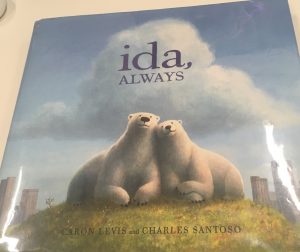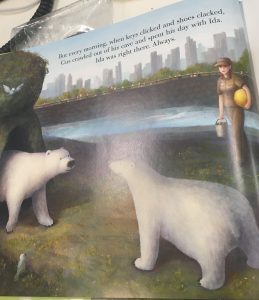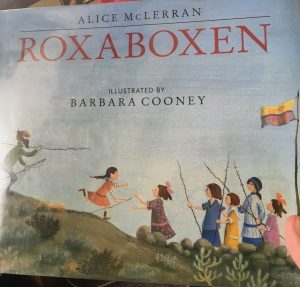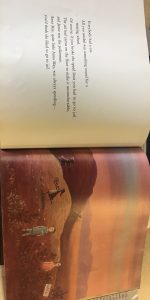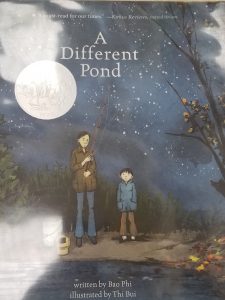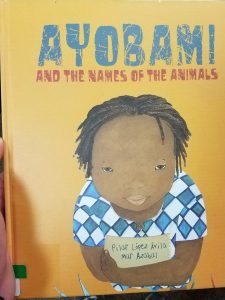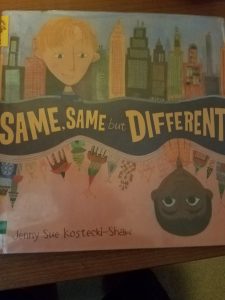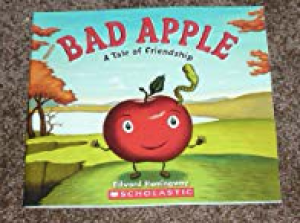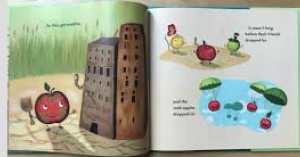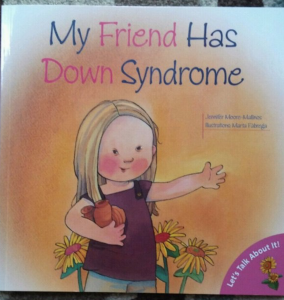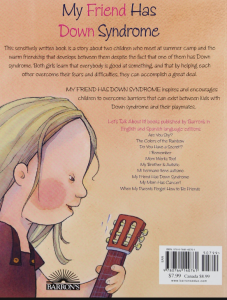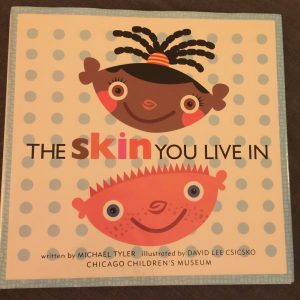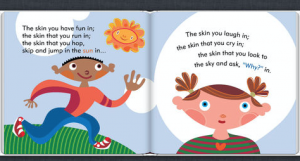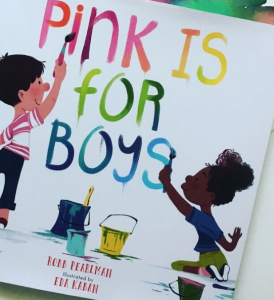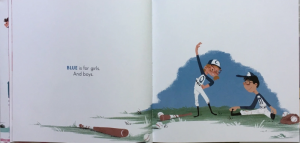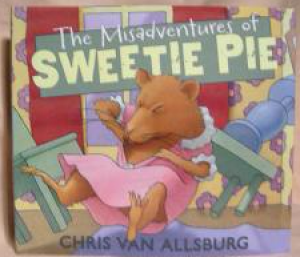Title: Ida, Always
Author(s): Caron Levis
Illustrator/Photographer: Charles Santoso
Publisher and Year: Atheneum Books for Young Readers, 2016
Number of Pages: 37
Tags: Animals, Emotion, Fiction, Friendship, Picture Book, K-5, Sarah Luce
Genre: Fiction
Descriptive Annotation:
Ida, Always is based off a true story of two polar bears in the Central Park Zoo. The story introduces the reader to Ida and Gus, two polar bears who played together, ran together, and dreamed about New York City together. Ida taught Gus about the city’s heartbeat, and how it was always around them and with them. One day, Ida got sick, and the zookeeper told Gus that Ida would die soon. Gus and Ida spent all of Ida’s remaining days together, working through their feelings; some days growling, other days laughing. Eventually, Ida died, and Gus learned how to accept her being gone, while still remembering her and feeling her heart beat there with his.
Classroom Application:
This text would likely be used best with teaching children about death, loss, and grief. While heavy topics that may not necessarily come up in curriculum and standards, they could be important to discuss depending on student experiences or situations within the classroom. Many students encounter the death of a loved one or classmate at an early age, and a book like Ida, Always could be a good tool.
Linguistic and Cultural Diversity Analysis:
This book is set in the Central Park Zoo in New York City. Many students may have never been to a big city, so the illustrations and some of the text may give students an opportunity to experience the culture of a big city. Most suburban and rural areas have a lot of land that is green and natural, but many cities do not have landscapes like this. The illustrations in Ida, Always portray the landscape of big cities, where there are lots of buildings and skyscrapers surrounding the relatively small area of natural land. The polar bears also talk about the noise of the city as “the city’s heartbeat” and how “they added their snores to the sounds of their city”. I could introduce the book by asking students if they have ever been to a big city and what they noticed about the landscape there. I could also ask the students if they have ever been to a zoo and/or if they have ever seen polar bears.
Illustration:
